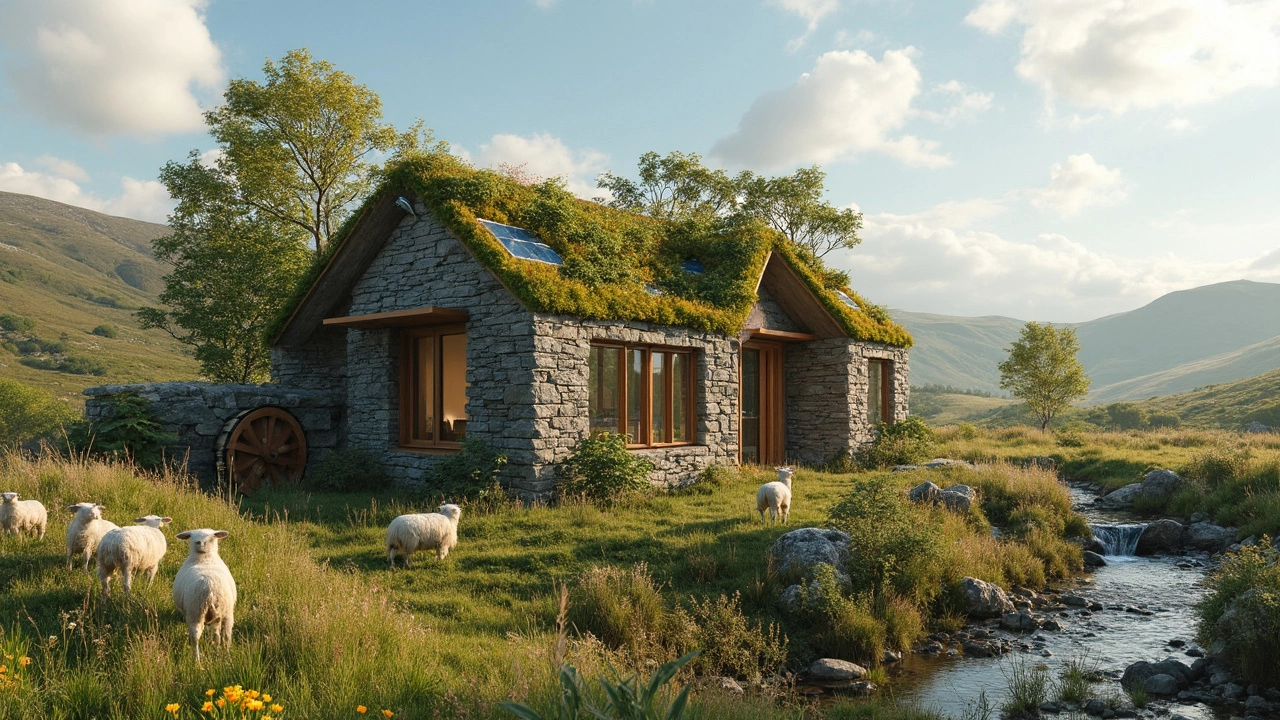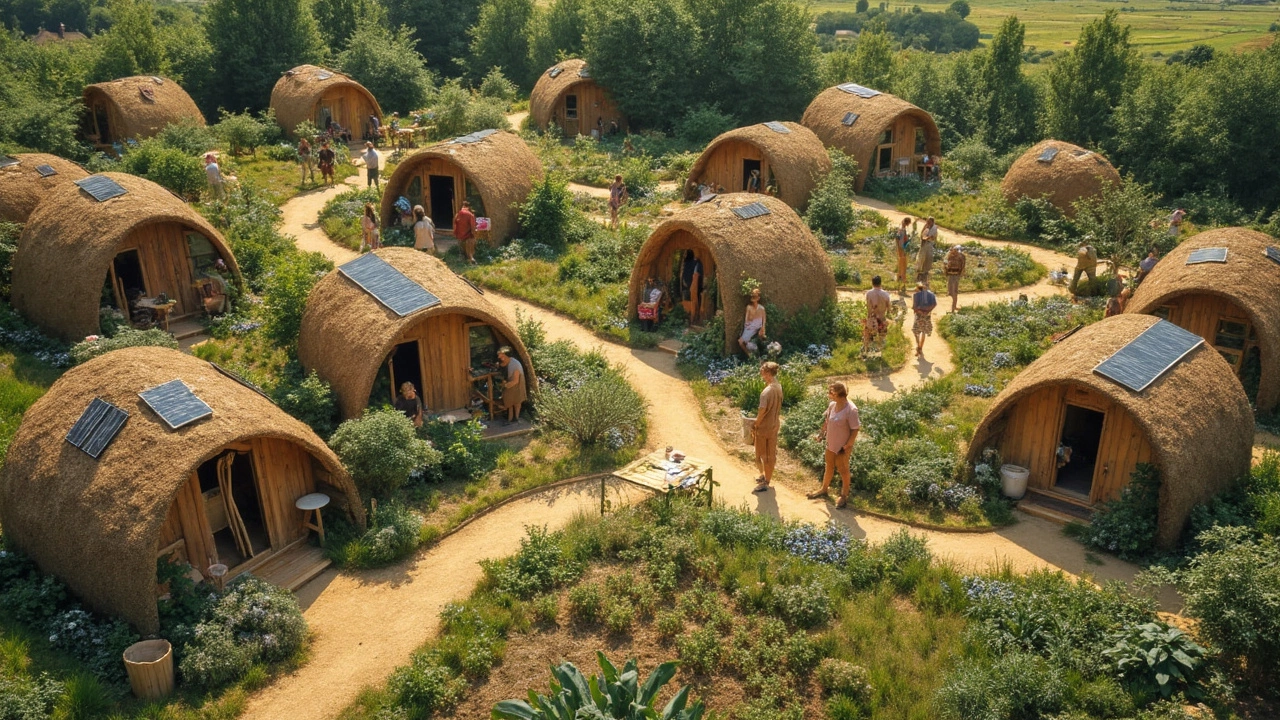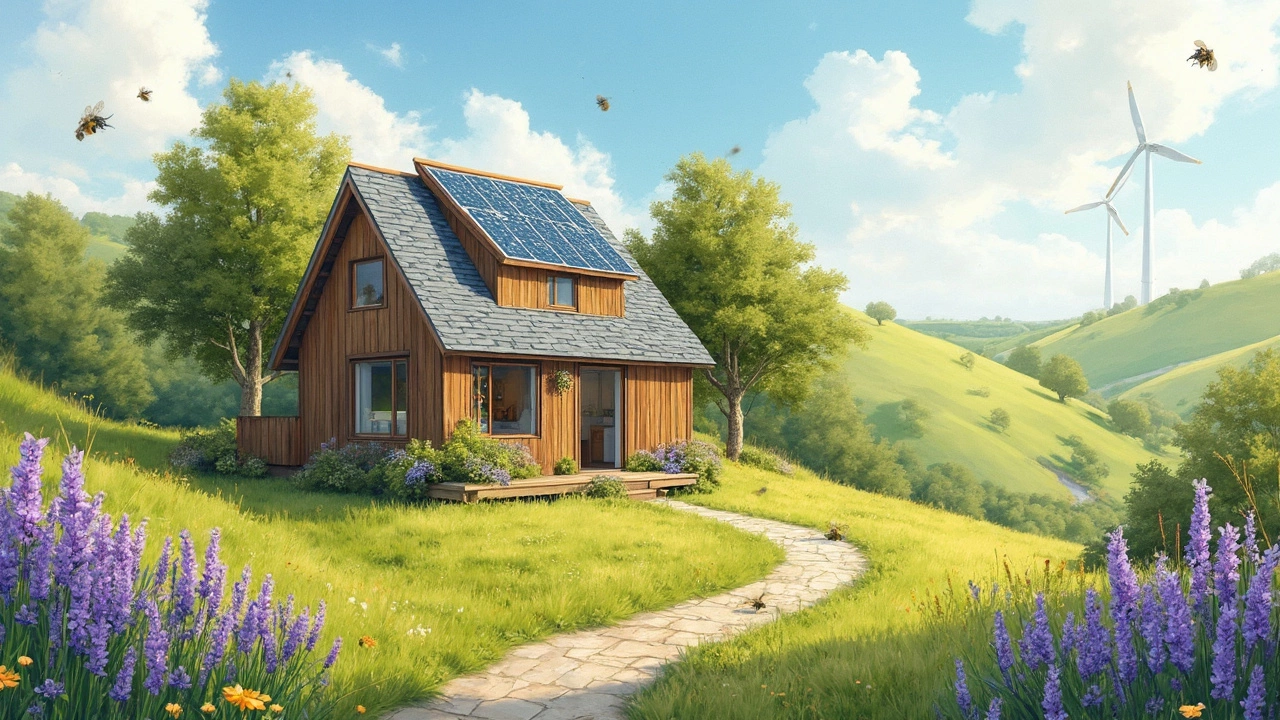Sustainable living has moved well beyond just a trend—it's become a necessity for many folks. Eco-friendly cottages are leading the charge, offering a blend of coziness and green living that’s hard to beat. You might wonder, what's all the fuss about these compact homes?
For starters, eco-friendly cottages are excellent at slashing your carbon footprint. They often use less energy, thanks to smart designs and materials that keep heating and cooling needs to a minimum. Whether it's solar panels soaking up the Aussie sun or rainwater catchment systems working wonders, these homes have a knack for using resources efficiently.
But it's not just about conserving energy. These cottages are an escape from the hussle of traditional living environments. Picture swapping out bustling streets for a peaceful community that shares your passion for sustainability. Tempting, right?
- Why Eco-Friendly Cottages?
- Innovative Building Materials
- Off-Grid Living Solutions
- Top Sustainable Communities
- Practical Tips for a Greener Lifestyle
Why Eco-Friendly Cottages?
Eco-friendly cottages are becoming the go-to options for those who want to live sustainably without sacrificing comfort. The awesome thing about these sustainable living spaces is that they're not only kind to the planet, but they also provide plenty of perks for the folks who choose to live in them.
Energy Efficiency
One of the big wins for eco-friendly cottages is their energy efficiency. By design, these homes minimize energy use, often incorporating renewable resources like solar power. Think about it—lower energy bills and a planet-friendly footprint. In Australia, for instance, rooftop solar panels are a common sight, with nearly 30% of homes having them installed. That’s a lot of sunlight put to good use!
Environmental Impact
These cottages are built with environmental awareness right from the start. Eco-friendly building materials like reclaimed wood, bamboo, and recycled metals are often used. Not only does this reduce the strain on natural resources, but it also cuts down on waste. It’s like giving the planet a little hug with your home.
Community and Lifestyle
Living in an eco-cottage often means being part of a community that shares your passion for sustainable living. These communities might offer shared gardens, rainwater collection systems, and even communal solar arrays. It’s all about working together to make the most of renewable resources and live a more sustainable lifestyle.
Personal Wellbeing
Let's not forget the personal benefits. Many folks report feeling happier and healthier in greener living spaces. With plenty of natural light, fresh air circulation, and often beautiful, tranquil locations, it's easy to see why. Plus, simplifying your living arrangements can lead to a more relaxed, fulfilling life.
So, if you're looking into eco-friendly cottages, know that you're considering a lifestyle that's packed with benefits. You get to live lighter on the land and enjoy a space that's uniquely your own. And that’s worth a lot.
Innovative Building Materials
Building an eco-friendly cottage isn't just about lowering bills; it's about making smart choices right from the ground up with sustainable living in mind. The materials used in construction play a huge role in shaping the environmental impact of your home. So, what are some of these cutting-edge materials that help us live greener?
Reclaimed Wood
Reclaimed wood is a favorite for those looking to add a rustic, yet sustainable touch to their eco-friendly cottages. Sourced from old barns or factories, this material not only reduces the demand for new lumber but also embraces a unique history. It's all about reducing waste and reusing what we already have.
Bamboo
Bamboo is rising as a superstar in sustainable materials. Why? It grows ridiculously fast—up to a meter a day—and it's incredibly strong. This makes it perfect for everything from flooring to wall panels in green housing. It’s natural, renewable, and doesn't require replanting after harvest.
Straw Bales
Don't underestimate straw bales. They're not just for farm animals! Straw bales are excellent insulators, perfect for keeping your home warm in the winter and cool in the summer. They're also abundant and cheap, which makes them a practical choice for sustainable architecture.
Recycled Steel
Go strong or go home, right? Recycled steel is tough as nails and much less harmful to the planet than its newly-minted counterpart. It uses around 75% less energy to produce. Plus, steel is endlessly recyclable, making it ideal for frameworks in modern eco-cottages.
Here's a sneak peek at eco-materials' impact over time:
| Material | Energy Savings |
|---|---|
| Reclaimed Wood | 50% less energy than new wood |
| Bamboo | 1% of the energy consumed by steel production |
| Recycled Steel | 75% energy savings over new steel |
Choosing the right materials isn’t just a step towards sustainable communities; it’s a leap. These innovative building materials not only make your home eco-friendly but also give you a space that's unique and full of character.

Off-Grid Living Solutions
So, you're keen to ditch the power grid? Living in an eco-friendly cottage offers a sweet chance to cut loose from traditional power sources. But how does it all work? Let's explore some cool off-grid solutions that make sustainable living a breeze.
Solar Power
No surprise here. Solar panels are a classic choice. They're more efficient and cheaper than ever. Slap a few panels on your eco-cottage's roof, and you've got the sun powering your life. Pair them with a battery storage system, and you'll have reliable energy even after sunset.
Wind Turbines
If your cottage is in a breezy spot, consider wind turbines. These nifty devices can generate electricity even when the sun's not shining. They're perfect for complementing solar panels, ensuring you've got a backup to keep the lights on and your appliances running.
Water Solutions
Off-grid living isn't just about electricity—water’s a biggie too. A rainwater catchment system can provide a reliable water source, while gray water systems let you recycle nearly everything but the kitchen sink. Not only will you save water, but your garden will love it.
Composting Toilets
Speaking of saving, composting toilets can save buckets of water. These eco-friendly wonders turn waste into valuable compost, reducing your impact on the planet and your water bill. It's a simple change that makes a huge difference.
Off-Grid Appliances
Don't forget about the appliances! From super-efficient fridges to tiny washing machines, opting for off-grid versions makes your cottage all over sustainable. Look for energy star ratings, and prioritize appliances designed to make the most of your self-generated electricity.
Off-grid living might sound like hard work, but with these solutions, it's easier than you’d think. The freedom of living off the grid combines beautifully with the cozy charm of eco-friendly cottages—making it truly one of the most rewarding ways to embrace sustainable living.
Top Sustainable Communities
Diving into the world of eco-friendly cottages isn’t complete without knowing where you can find thriving sustainable communities. These spots do more than just house sustainable living habitats; they foster a culture of environmental mindfulness.
Findhorn Ecovillage, Scotland
This community has been around since the 1960s, making it a frontrunner in sustainable living. Located in northeast Scotland, Findhorn boasts homes that prioritize renewable energy and innovative waste management. Residents actively engage in activities that enhance their green footprint, from organic food production to community events centered on eco-friendly cottages.
Masdar City, United Arab Emirates
You wouldn't typically think of the UAE when imagining green living, but Masdar City is turning heads. Designed to be sustainable throughout, it combines energy-efficient architecture with modern amenities. With solar panels powering most operations and a strong focus on public transport, it’s a prime example of green housing on a larger scale.
Burlington, Vermont, USA
Burlington was the first American city to run entirely on renewable energy. With an emphasis on walking and cycling, this city reduces car dependency big-time. The local government and community support numerous green initiatives, making it a hot spot for those seeking a sustainable lifestyle—a perfect match for aspiring eco-cottage dwellers.
Crystal Waters, Australia
Back home, Australia isn’t left behind in the sustainable movement. Crystal Waters near Brisbane is a self-sufficient ecovillage known for its permaculture design. Residents cherish shared gardens and community-driven projects, which highlight resource-sharing and the use of renewable energy—truly embodying the eco-friendly ethos.
Keep an eye on these communities whether you’re looking to move or just curious about practical sustainable living. They offer valuable insights into building a future that’s both comfortable and responsible.
Comparing Sustainability Features
| Community | Key Feature | Energy Source |
|---|---|---|
| Findhorn | Renewable Energy | Wind Turbines, Solar Panels |
| Masdar City | Energy Efficiency | Solar Power |
| Burlington | Green Initiatives | Renewable Mix |
| Crystal Waters | Permaculture | Local Resources |
Consider these communities as blueprints for developing or joining sustainable communities, and explore how they blend technology, community spirit, and environmental responsibility seamlessly.

Practical Tips for a Greener Lifestyle
Living in sustainable living isn't just about where you hang your hat; it's about how you live day-to-day too. Transitioning to a greener lifestyle doesn't have to be overwhelming. Here are some down-to-earth tips to help you kickstart your eco-journey in your own eco-friendly cottages.
Rethink Energy Use
Energy consumption is a huge part of daily life. In a green household, you can take simple steps to cut back. Think about switching to LED bulbs, which last longer and use way less power than traditional options. And if you haven't already, invest in some solar panels—they'll save you heaps and are perfect for harnessing all that sunny Aussie weather.
Waste Less, Save More
Minimizing waste is a cornerstone of sustainable living. Start composting! It’s a great way to reduce kitchen waste and nourish your garden with natural fertilizer. Don’t forget to bring reusable bags, containers, and water bottles to cut down on plastics.
Go Local
Supporting local artisans and farmers isn't just good for the community—it’s fantastic for the planet. When you buy local, you reduce the carbon emissions associated with transport. Plus, you get to enjoy fresh, seasonal produce that packs heaps of flavors.
Efficient Water Use
Water conservation is key in an eco-friendly cottage. Install low-flow showerheads and toilets to save water without sacrificing functionality. A rainwater tank can also be a great addition, letting you make the most of natural rainfall for gardening or even flushing toilets.
Green Transportation
If you're close to work or the shops, why not ditch the car altogether? Walking or biking reduces emissions and is a sweet way to stay fit. If you must drive, consider an electric or hybrid vehicle for greener commutes.
| Tip | Potential Savings |
|---|---|
| LED Bulbs | 80% energy use reduction |
| Solar Panels | Up to $1,500/year |
| Low-Flow Fixtures | 50-70% water use reduction |
Remember, every little step towards sustainable communities adds up. Whether it's a small change or a total lifestyle overhaul, you'll be making a difference for the planet—one day at a time.

